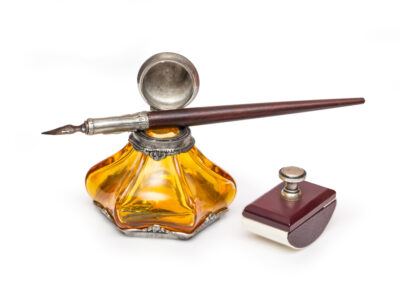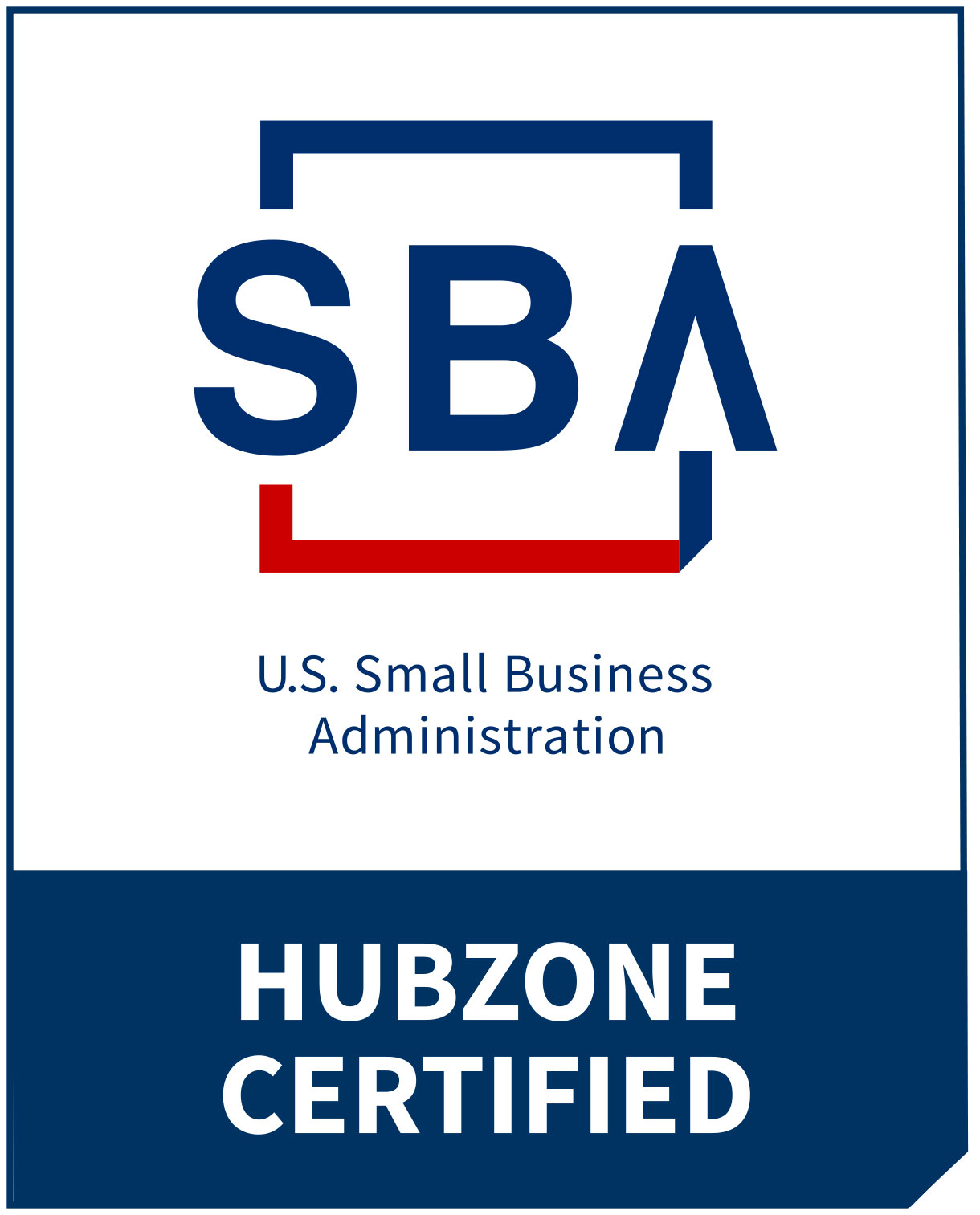The Czochralski method is the gold standard for 21st-century crystal growing, but it was not always so. In this blog article, ER Precision Optical Corporation traces the history of the famous Czochralski Method of Crystal Growth.
We believe that historical connections can humanize a corporation. So, we invite you to enjoy some history behind the chemistry that makes it possible to grow crystals from Silicon. Likewise, we will show you how a crystal-growing process from 1916 has become critical to life and technology in 2021.
Introducing Jan Czochralski, Polish Chemist

The Inspiration Behind the Czochralski Method. Only instead of a droplet on the tip of the nib, Czochralski saw a thread of tin. Surprise!
Imagine it is 1916, during World War I. However, you are far from the battlefield. It’s dusk. Jan Czochralski is recording his day’s work with pen and paper. He had spent the preceding weeks trying to find ways to measure “the crystallizing speed of metallic alloys.”
This was his quest because World War One had painfully restricted metal alloys. And he was looking for new ones. However, first, he needed a way of measuring metal alloys, old and new.
The Legend of the Czolchralski Method
He was deep in thought as wrote up the findings from his research. Methodically he dipped his old-style pen into the inkwell, making his notes. Dip. Scratch. Scratch. Dip. Scratch. Dip. Scratch. We can imagine him concentrating deeply on his technical notes.
Suddenly he realized he had accidentally dipped his pen into the small melting pot of molten tin. It was sitting there on his counter, beside the inkwell, cooling off. He had confused it absent-mindedly with the ink well.
He then realized that a thin thread of metal trailed from his pen as he moved it toward his paper. Since he was one of the foremost metallurgists of the day, this small phenomenon instantly captured his scientific c

Note the incision from the tip of the pen to the hole in the pen nib. This structure caused pulled a thread of metal from molten tin in a single crystal.
Intense, Incisive, and Instant Experiments
- Determined to understand the silvery thread that arced from his pen nib, he proceeded to investigate. Next, he removed the pen nib and replaced it with a new pen nib. He tried to duplicate what had been an unconscious action.
This time he watched as he gradually immersed the pen into the melting pot. He pulled it out cautiously. “And once again, he saw a hanging thread.”
- Any scientist knows the validity of repeating an experiment. Therefore, he repeated the process with yet another nib. He noted the same thing happened.
- Next, he repeated the process yet another time. Once again, he saw the thread. It was a tiny, filament, shimmering in the shifting evening light.
- He was beginning to form an interesting hypothesis. He broke off the metal thread. Then again, he dipped the pen into the melted tin. However, this time he withdrew the pen very quickly. The thread was not there. Mr. Spock of Star Trek fame would say, “Fascinating.”
- The night fell, and the scientist did not notice. He simply continued experimenting with the amazing threads of tin and with timing, dipping, and technique. For many weeks prior to this moment of discovery, Czolchraski had been searching for “a way to measure the crystallizing speed of metallic alloys.”
The Czolchraski Questions
- Was it possible “that the length of the thread depended on the speed with which he pulled the pen out…” of the melting pot of tin?
- Remember, he had been searching for a way to measure the crystallizing speed of various metallic allows. He must have thought, “So I’ve found a solution.” Could that be some property of the metal?” The answers to this and other questions formed the heart of the Czolchralski Method.
Insightful Answers and Conclusive Outcomes
He had indeed found a way to measure the crystallizing speed of metallic alloys. “The quicker he pulled the pen out, the shorter the thread was.” He wrote these observations down immediately. And he didn’t stop there.
“He spent the following days working out a device that would help to more objectively test whether his accid
ental observation implied information about the material’s properties.”
Then, he began to understand the chemistry of what he had accidentally created in that first “aha” moment.
- Gustave Tammann’s previous studies had proven that crystallization “occurred in a small hole of a thin glass

Who knows what the future will bring by using the CZ method? We honor Czochralski with every product we make.
tube.”
- He figured out that a pen nib has an incision that had served the same purpose as the hole in the glass tube. Additionally, the shape of the incision created the crystal filament.
- As he built his device, he substituted a mechanism to perform the function of his hand. Only the mechanism could be precisely adjusted to “lift the tube at a chosen fixed speed.” A simple clockwork motor powered the device. It was the first crystal pulling apparatus.
Crystallization Speed Measurement Leads to Another Amazing Discovery
The scientists quickly discovered that the “metal thread was a single metal crystal.” This was a momentous discovery because scientists understood that the testing of many physical properties of metal was only possible on individual crystals.
History states, “Several years before, W. H. Bragg and his son W. L. Bragg had demonstrated that a monocrystalline solid is built of atoms arranged in an almost perfect way.”
However, before the Czochralski Method, scientists had no way to inexpensively obtain single metal cr
ystals. With Czochralski’s device, metallurgists could produce the much-needed crystals, inexpensively and exquisitely simply.
The Legacy of The Czochralski Method
Jan Czochralski did not apply for patents or earn a fortune. Perhaps that is because it was subsequent scientists and that demonstrated they could grow very large and extremely useful crystals with the distinguished CZ method.
In fact, no one patented the technology until Gordon Teal, “working at Bell Labs in the 1950s.” At that time, he “modified Czochralski’s method to grow large crystals of silicon and germanium for the first time.” In 1950, Americans Gordon K. Teal and J.B. Little from Bell Labs would use the method to grow single germanium crystals, leading to its use in semiconductor production.
The 1955 patent by Little and Teal does not even mention Czochralski’s name…” His life ended in obscurity but his method brought him immortality. For, without his method, we would be lacking all the benefits of semiconductors. And there would be no Silicon Valley at the base of our technology.
The Czochralski Method: Empowering the Future
Few people doubt that the future of technology is built on silicon. We added crystal growing to meet the growing demands for high-quality crystals. In fact, ER Precision Optics can custom grow crystals to your most demanding specifications.
Here at ER Precision Optical, we carry on the inquisitive work begun by Czochralski, in our ow

Modern crystal pulling equipment: We have come a long way from Czochralski’s simple apparatus to the 21st century. But we still basically use his method, the CZ method.
n metrology lab and an imaginative R&D Department. For manufacturing, we have mentioned previously, we have crystal pullers. Three of them, to be exact. Significantly, they are massive, complex machines, state-of-the-art technology. As we have told you before, we specialize in optical grade Germanium and Silicon.
Celebrating the CM With Diverse Designs
Likewise, we are committed to supporting infrared optics, semiconductor components, and solar thin-film targets. We also create semiconductor or electronic grade, and even solar grade, silicon.
- With the same cautious efficiency of Jan Czochralski in pursuit of his method, we help clients develop designer crystals for advanced Research and Development efforts.
- We have the capability and the resources to help you modify silicon material chemistries. (Please consult our products page to discover more information on the ways we reduce lead times and tightly control materials.
- By the way, do you know we are IO certified and ITAR compliant to address the full range of commercial to military applications?
- And, and are you aware that ER Precision Optics is currently the only US producer of multiple infrared crystals?
Whereas we focused this article on the history behind the Czochralski Method, our next blog brings you some of the more technical details of our modern crystal growing. What we do every day will amaze you


